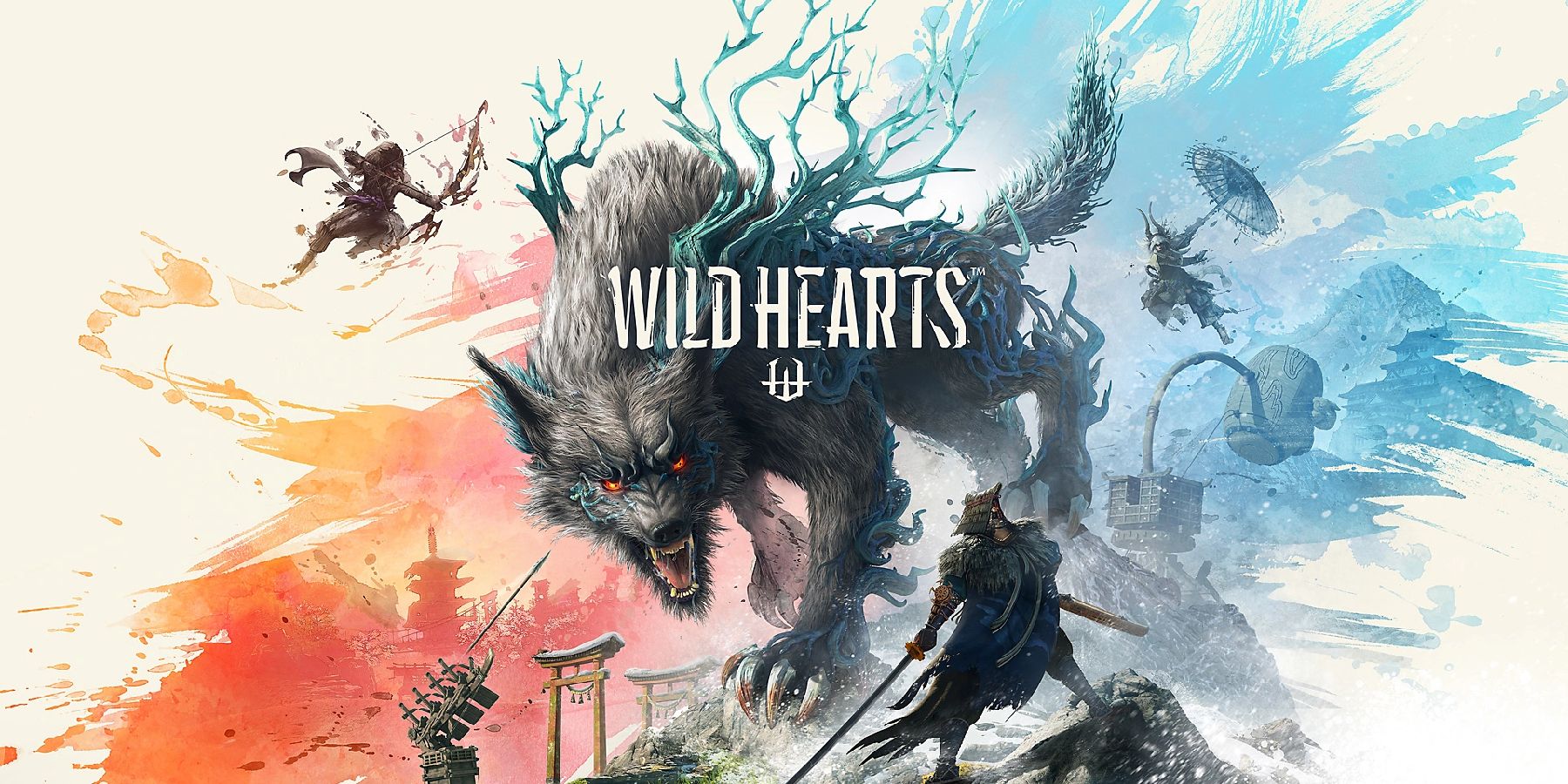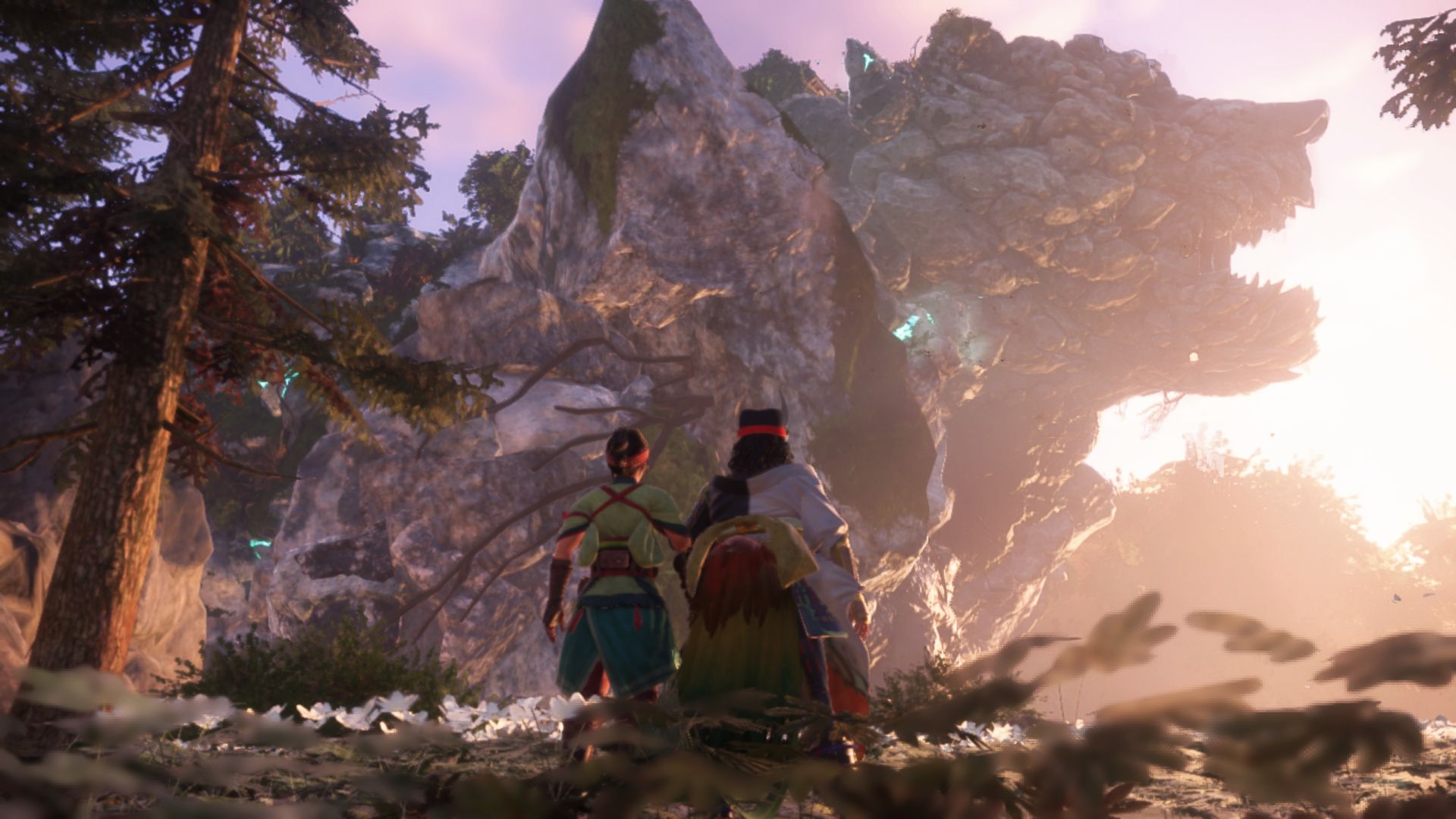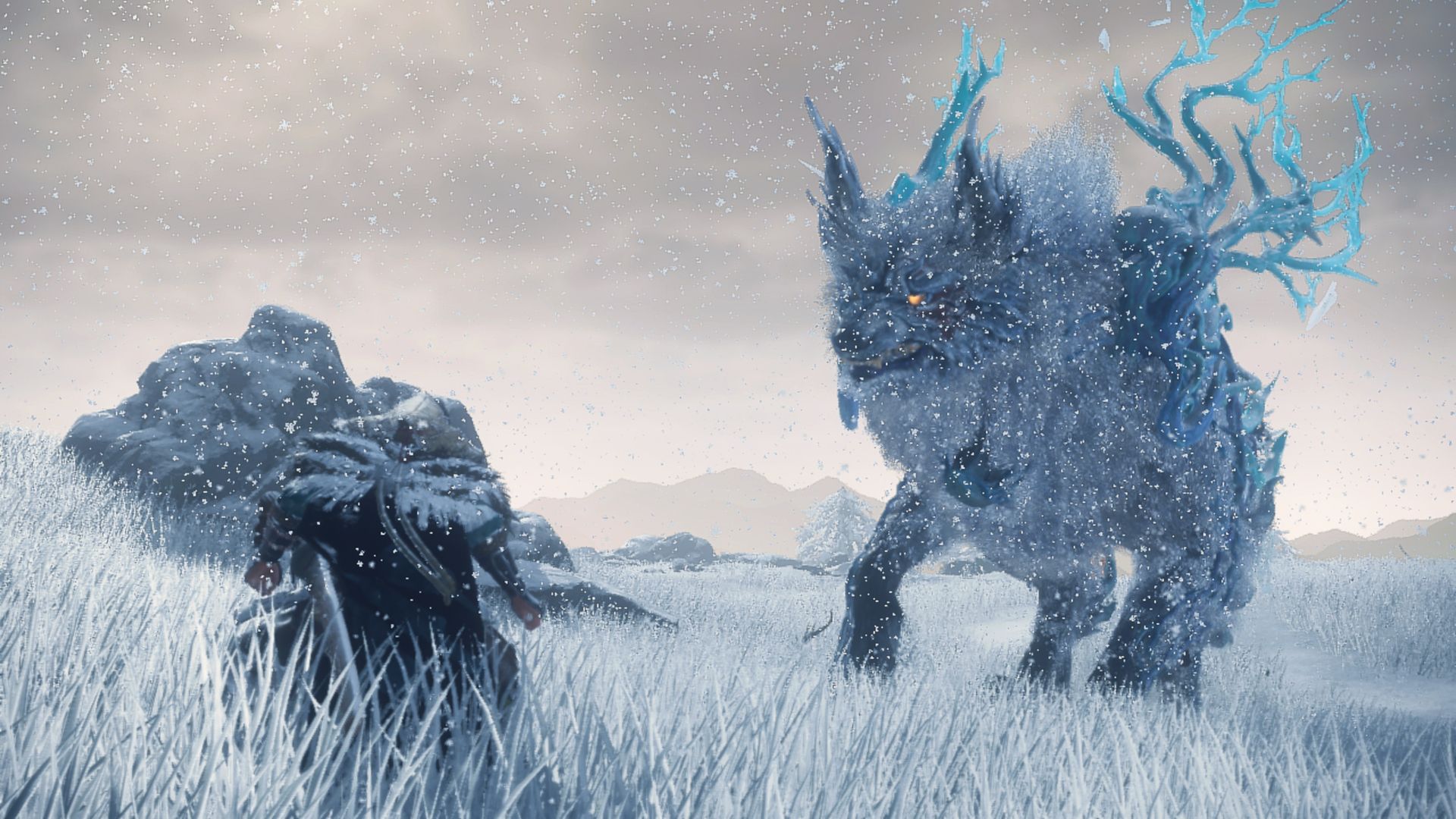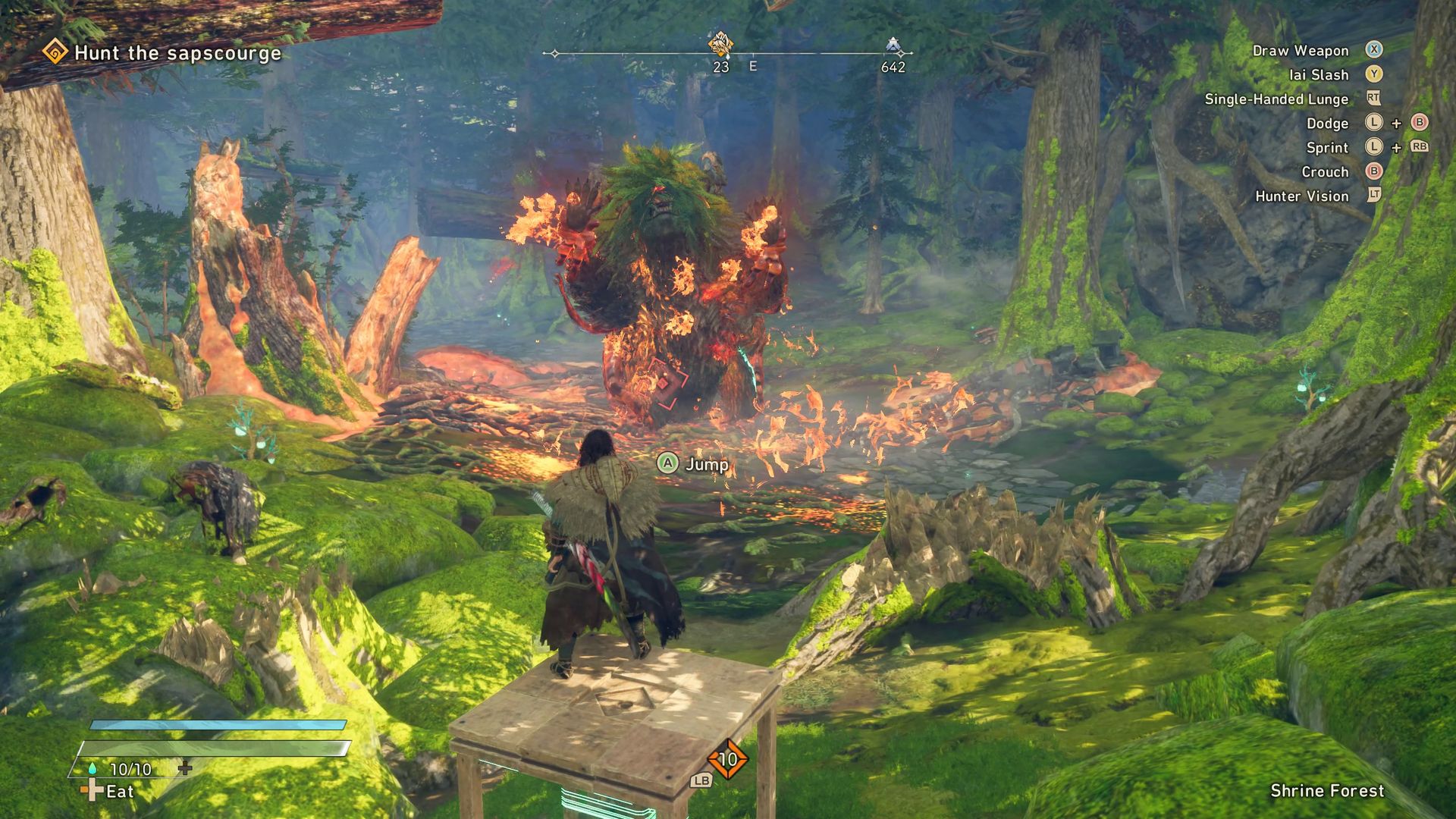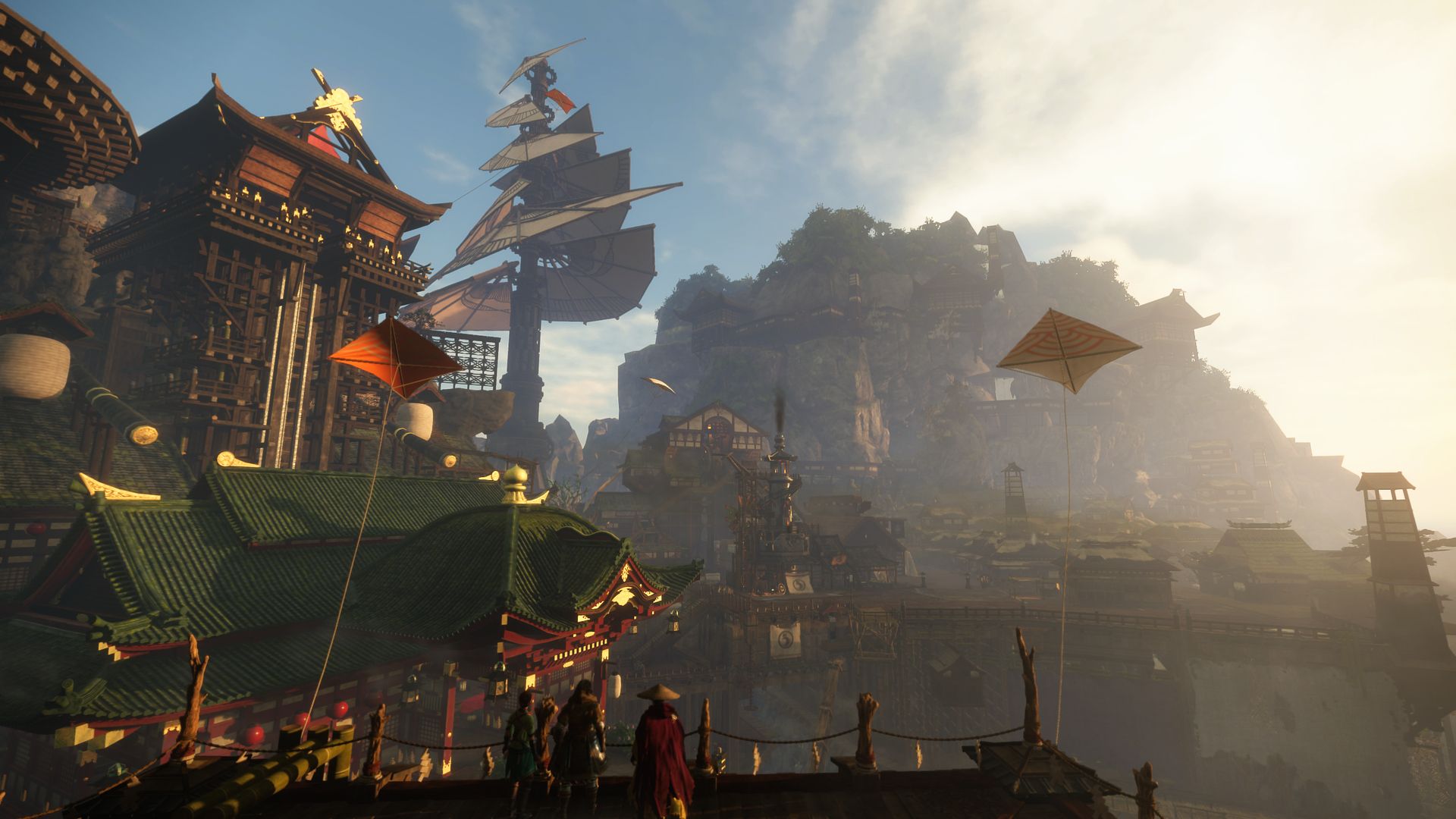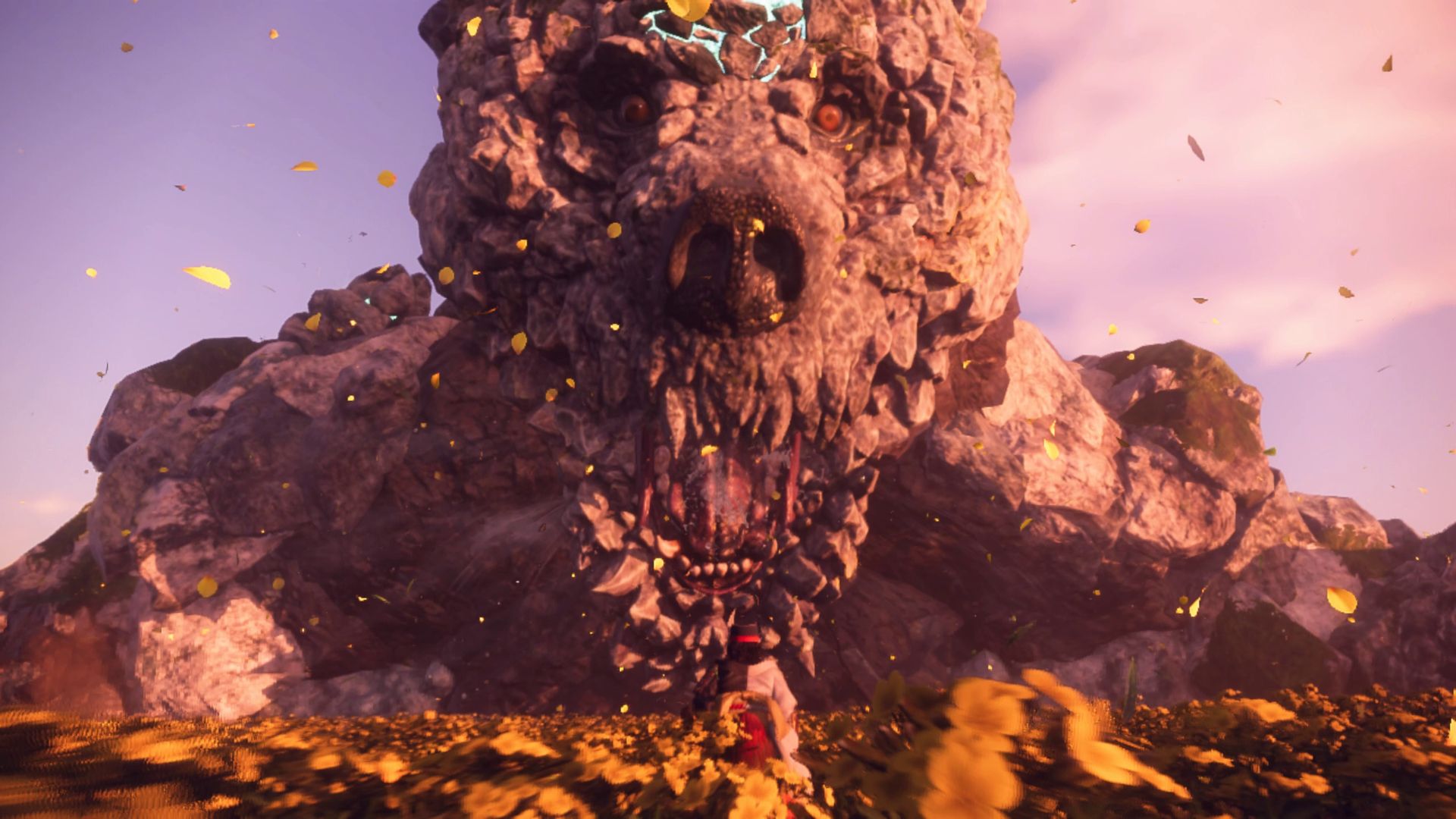Developed by Koei Tecmo and Omega Force, Wild Hearts is an exciting new entry in the hunting game genre that gets the fundamentals right and proves it can stand toe-to-toe with some of the genre’s long-standing greats. Previously, Omega Force’s work with Toukiden demonstrated that the studio could create a decent hunting experience, but a spark was missing to make the series truly special. With Wild Hearts, Omega Force has found that spark, and offers something new and compelling to the beast-hunting genre in the form of Karakuri.
Despite being a solid contender in the hunting genre, Wild Hearts still has a few shortcomings as it tries to carve out a niche in a space that has been dominated and refined by Monster Hunter. Wild Hearts can’t seem to piece together interesting characters or tell a story that isn’t just a precursor to fighting Kemono. It is also lacking the same level of depth in non-monster hunting content while also being a technical mess on consoles and PC. Still, Wild Hearts delivers such a great experience at its core that trudging through its worst moments is worthwhile to experience the thrill of the hunt over and over again.
Wild Hearts starts with the basic premise of a hunter washed ashore on the fantasy land of Azuma, a feudal Japanese-inspired setting where ferocious Kemono have overrun the world. In the wake of the Kemono catastrophe, humans have gone into seclusion within the hub city of Minato, where the main character finds himself the champion of the people. A small cast of supporting characters accompanies the hunter, including a grumpy old samurai named Ujishigei, a bubbly blacksmith named Natsume, a level-headed scholar named Suzuran, and a handful of minor characters that tend to pop in and out as the story requires them to.
The story in Wild Hearts is nothing special, moving at a brisk pace and offering brief character arcs for a cast that often feels one-dimensional and generic. For all intents and purposes, the main story missions and almost all the side content in Wild Hearts are simply a vessel to get players fighting more Kemono up until its last leg, where the story finds some substance. Truly, it's what the player sees as they explore Azuma that is the most compelling.
Rich themes of how humans, beasts, and nature work with or against each other are at the center of Wild Hearts’ world. As players walk across each of the four main zones, the art and architecture regularly paint a picture of how Azuma and its Kemono inhabitants have reclaimed land where humans once lived. However, nature’s reclamation of the world is met with respect by all characters. At the end of every hunt, the player salutes the Kemono they have slain, and similarly, crafting items the player picks up around Azuma are met with the same respect. Environmental storytelling is the narrative's strongest aspect, along with the game's menacing Kemono.
From the moment players encounter their first Kemono in the opening chapter of Wild Hearts, it is clear that a high level of care and detail went into crafting every single one of these creatures. Throughout the entirety of the game, the Kemono are the focus of just about every quest the player will encounter, with every system in the game helping players find, chase, and slay Kemono better than they did before. Kemono allow players to craft better gear, learn and enhance Karakuri, and drive all endgame content. Out of all the characters in Wild Hearts, the Kemono are easily the most interesting and important ones that players will encounter. They are the star of the game.
From a design perspective, every Kemono looks as if it starts with a real-life animal as a base, and then they are twisted into some sort of mutated, animal-nature hybrid. For example, Gritdogs are fearsome groundhogs with a boulder as a tail, Lavabacks are gorillas that have molten rock seeping from their spines, and in an even more macabre design, Ragetails are a horrifying mixture of rodent and flora where nature has already halfway blinded its rat host. The design work behind each Kemono is superb, and fighting these monsters is always a joy. The fun of hunting in Wild Hearts comes from both the anticipation of a new challenge and from seeing what unique design Omega Force came up with for these creatures. However, there is a lack of unique Kemono in the game.
At only twenty Kemono throughout four main hunting zones, Wild Hearts can leave players feeling like it has room to stretch its legs. Additionally, many of these Kemono are simply variants of previously existing beasts. For example, the Kingtusk and the Icetusk derive from the same base concept of a nature-infused boar, except with different elements applied. The same goes for the Lavaback and Cobalt Lavaback and the Ripclaw and Dreadclaw. Granted, these Kemono all require different approaches and battle strategies, but visually speaking, some more diversity would have been great. Wild Hearts makes hunting these Kemono so fun that the 20 it has to offer feels a bit too lean.
Gameplay-wise, hunting game juggernauts like Monster Hunter have dominated the scene for two decades now and have had the advantage of refining their core gameplay elements due to their long tenure. For a new IP trying to compete with a juggernaut in the same space, Wild Hearts does an impressive job at capturing all the depth, feel, and style it needs to craft an excellent action-hunting game while also demonstrating that the genre has room to expand. Wild Hearts pushes the genre forward with its Karakuri crafting system while ensuring weapons feel great to use and also offering plenty of incentive within the game’s core mechanics to keep players in their seats.
Every weapon in Wild Hearts has its own identity and playstyle that can drastically change how players pace themselves or position themselves on the field. Slow and methodical weapons like the Maul require players to think wisely about their swing timing and where they will land at the end of a hit to avoid being countered. Meanwhile, the rapid and agile Claw Blade will have players making dozens of decisions and attacks in the span of seconds. With a total of eight diverse weapons ranging from katanas, umbrellas, and bows and arrows, there is plenty to toy around with here, and figuring out how to use each weapon is just the start.
Skill trees and build optimization have a great amount of depth in Wild Hearts. The game uses less of a traditional skill tree and more of a “skill web” that players can weave through to make all sorts of unique weapon variants and modifications. Wild Hearts also never puts hurdles in the way of player experimentation thanks to its forgiving respec requirements and generous inventory space that far exceeds the eight base weapons in the game. Meanwhile, almost every armor set has a human or Kemono path to follow, each one offering unique boosts and benefits for however players would like to role-play.
Wild Hearts’ most significant contribution to the hunting genre comes in the form of crafting via the Karakuri system. In a mix of Fortnite’s on-the-fly, heat-of-battle crafting mechanics and Death Stranding’s traversal and social-based crafting philosophy, Wild Hearts creates a crafting system that feels intuitive and oftentimes critical to the success of every hunt and discovery of Azuma.
As players fight Kemono they will unlock new Karakuri that start basic, such as craftable crates, and then progress to more complex machines, like a firework cannon that can ground winged Kemono. The initial process of learning how to build specific Karakuri and when to use them isn’t easy; however, once the process clicks and players can find the synergy between their weapons and Karakuri, or look back and see how each hunting zone has become an optimized web of world traversal, the sense of reward and accomplishment is palpable.
Wild Hearts’ strict focus on hunting Kemono is both its strength and its weakness. On the positive side, if players want to get stronger, they have to fight stronger Kemono and make stronger weapons and armor with the spoils of the hunt. It’s a progression system that fuels itself and makes the game hard to put down, all thanks to the aforementioned depth in its weapons systems. Additionally, Kemono hunts are brief as far as hunting games go, which is a nice change of pace in a genre that loves to eat up hours for just a few hunts. For those that only want to fight Kemono and fight them a lot, Wild Hearts is a treat. However, it’s between the frantic bouts of action that the game lacks substance.
Things like tracking and discovering Kemono feel too simple, as the whole process is mostly reliant on placing down a Kemono tower and following a waypoint. What's more, throughout a fight, a Kemono will eventually be routed to a new area of the map, and the process of finding that Kemono is to simply follow the Hunter Vision trail a short distance to a new area of the hunting zone. Additionally, each of the game’s four main hunting zones winds up feeling quite compact as they tend to recycle the same handful of fighting areas quite regularly. Wild Hearts is a fun ride for its roughly 35-hour main story and has enough to keep players going for a while in the post-game with its Volatile Kemono and endgame gear sets, but it does tend to wear thin after extended play sessions.
Unfortunately, Wild Hearts is also plagued by very poor technical and graphical performance and multiple bugs. On PC, the game tends to struggle even on higher-end hardware while not providing a visual experience worthy of the game’s hefty system requirements. A proprietary upscaling solution does exist within the game’s graphical settings to make up some performance, but it is far too aggressive to use and makes the whole image look very blurry. A day-one patch is on the way, which should fix some performance issues, but in its current state, the game still needs a lot of work.
All versions of Wild Hearts also suffer from graphical inconsistencies like flickering, pop-in, and lighting hiccups. And on top of visual bugs, the game also regularly has problems with poor hitbox detection and a camera that loves getting stuck inside foliage. Plenty of Kemono got a few cheap hits on us thanks to a camera that was inside a tree while we were anticipating an attack or finding an opening.
It is safe to say, however, that Wild Hearts is a wonderful new IP in the hunting genre that not only stands on the shoulders of Monster Hunter but can also meet it eye-to-eye. It isn’t the most fleshed-out hunting game compared to its progenitor, but it proves that it doesn’t have to be. A razor-sharp focus on combat, player progression, and Kemono hunting is more than enough to make Wild Hearts an excellent palette cleanser for fans that need something new to sink their teeth into. Add in the game’s fun Karakuri crafting system, a flexible and versatile weapon upgrade system, and beast designs that inspire both awe and horror, and Wild Hearts can proudly stand tall as a new pillar in Omega Force’s diverse catalog of games.
Wild Hearts is available now for PC, PS5, and Xbox Series X/S. Game Rant was provided a PC code for this review.
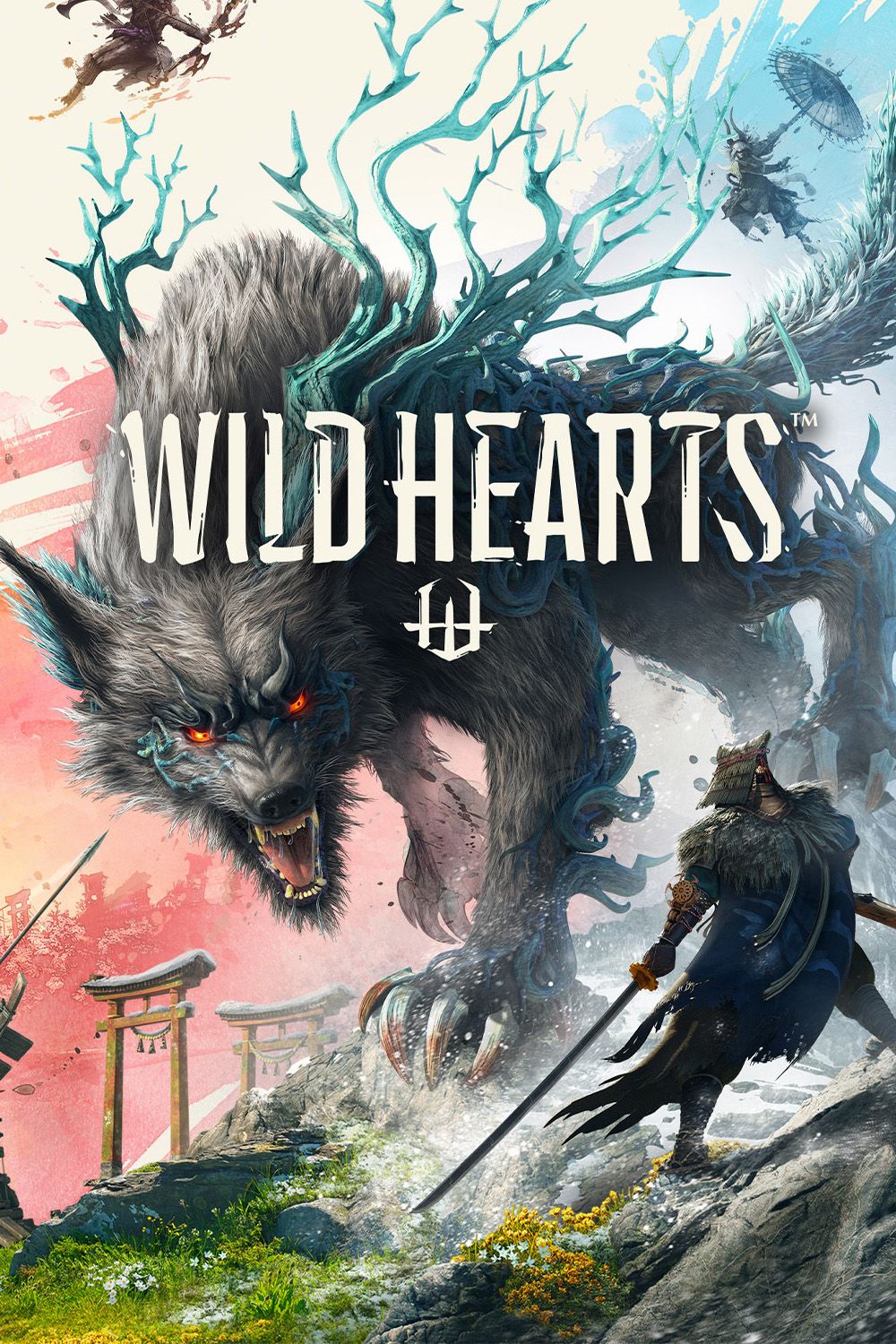
Wild Hearts
Developed by Koei Tecmo and published by EA, Wild Hearts is a hunting game that pits players against the Kemono, powerful beasts infused with nature. Set in a fantasy world inspired by Feudal Japan, the game is an action RPG.

